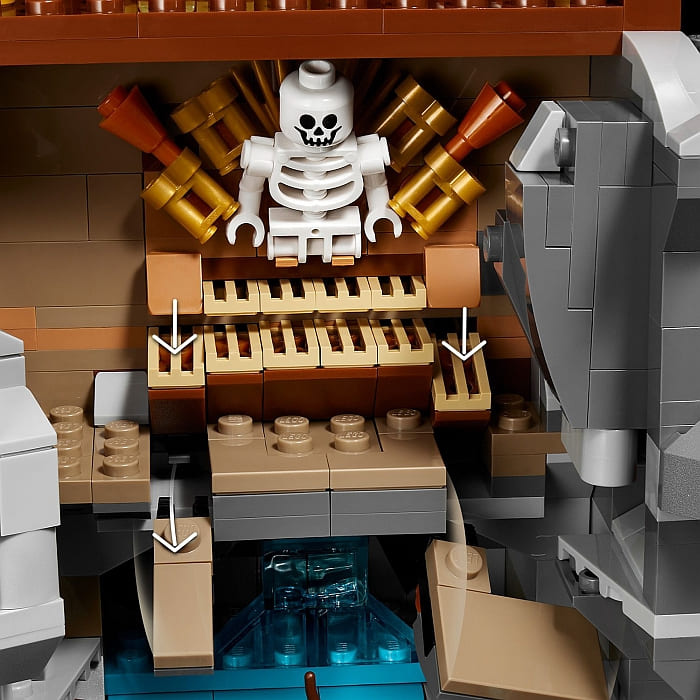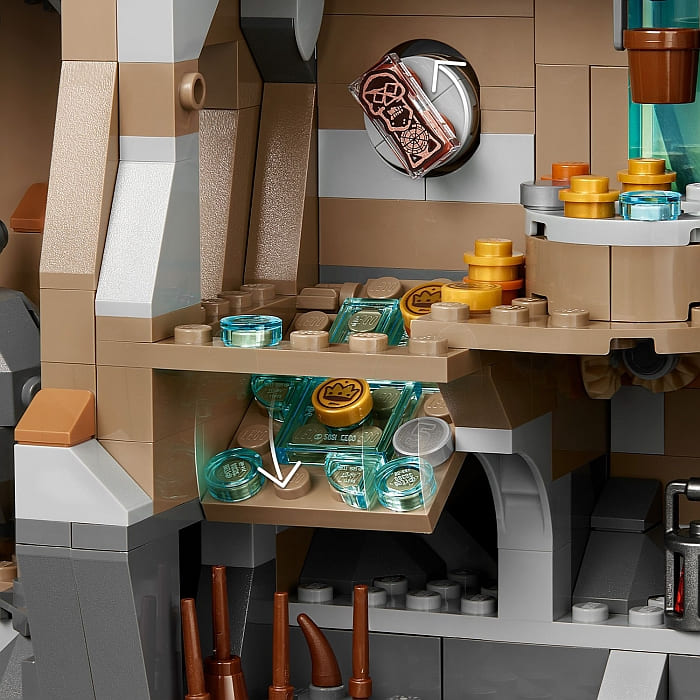The big news today is the reveal of the upcoming #21363 LEGO Ideas The Goonies set. Read the details below and let’s discuss!

The LEGO Group, in partnership with Warner Bros. Discovery Global Consumer Products, today unveils the #21363 LEGO Ideas The Goonies set, a 2,912-piece diorama model that invites adult fans to relive the ultimate underground treasure hunt – in brick form.

To celebrate the launch, the LEGO Group has partnered with Oscar-winning actor Ke Huy Quan for a nostalgic mini-film tribute to the beloved 1980s classic. Revisiting his role as Data, the gadget mastermind, Ke Huy Quan guides viewers through the set’s booby traps and showcases hidden easter eggs, sharing personal memories from his iconic performance along the way. Fans can watch the mini-film and step back into the adventure here.

This collectible set features brick-built recreations of memorable scenes, from the Fratellis’ hideaway and caves, to One-Eyed Willy’s legendary treasure room. You can even flip the model to reveal the haunting wreckage of the Inferno pirate ship. Twelve key characters are represented as minifigures, including Mikey, Mouth, Chunk, Andy, and, of course, Data. Brand-new elements were designed for Sloth’s pirate hat and bandana, and Mama Fratelli’s hair and beret.

Ke Huy Quan comments: “Revisiting Data after all these years – but this time in LEGO form – has been such a joyful experience. The Goonies was all about heart, adventure, and friendship, and this set captures that spirit in fantastic detail. From the booby traps to the treasure room, it’s like stepping back into the tunnels with the gang – only now, I get to share that magic with a whole new generation of fans.”
Builders can drop boulders and activate trapdoors with the Copper Bones Skeleton Key and play the Skeleton Organ – just be careful not to hit the wrong note! The set is packed with nostalgic details for The Goonies fans, with props including Data’s utility belt and Mouth’s hairbrush. There is even a nod to the legendary deleted octopus scene, plus Sloth’s daring mast-slide onto the Inferno’s deck. Dimensions: 18cm in width, 62cm in length, and 36cm in height.





The LEGO Ideas The Goonies set was submitted by Greece-based 3D artist and fan designer, Vaggelis Ntezes (LEGO Ideas name: Delusion Brick), as part of the LEGO Ideas program. LEGO Ideas allows fans to submit product ideas, which are then voted for by the community before being considered to be made into an official LEGO set.
“In designing this set, I revisited my childhood memories – growing up in the 80s, playing with LEGO Pirates sets and watching The Goonies,” said Vaggelis Ntezes. “Combining nostalgia, fantasy, and creativity, I wanted to build something that offered both playability and display value. The final design merges the legendary Inferno with the cave system and booby traps, capturing the spirit of adventure that made the film so unforgettable. I’m thrilled to see it come to life and hope it brings joy to fans old and new.”

The LEGO Ideas The Goonies set will be available for LEGO Insiders starting from the 1st of November, and for all from the 4th of November. Prices are as follows: £269.99 / €299.99 / $329.99. For more information, visit the LEGO Ideas section of the Online LEGO Shop.

Additionally, shoppers who purchase the set between the 1st -7th of November will receive the #40773 LEGO Ideas The Goonies: The Walsh’ Attic as a gift with purchase, available while supplies last.

Fans can personalize their treasure-hunting crew at the LEGO Minifigure Factory in LEGO stores, with exclusive The Goonies-themed torsos available for a limited time.
What do you think? How do you like the new LEGO Goonies set? Feel free to share your thoughts and discuss in the comment section below!
And you might also like to check out the following related posts:















